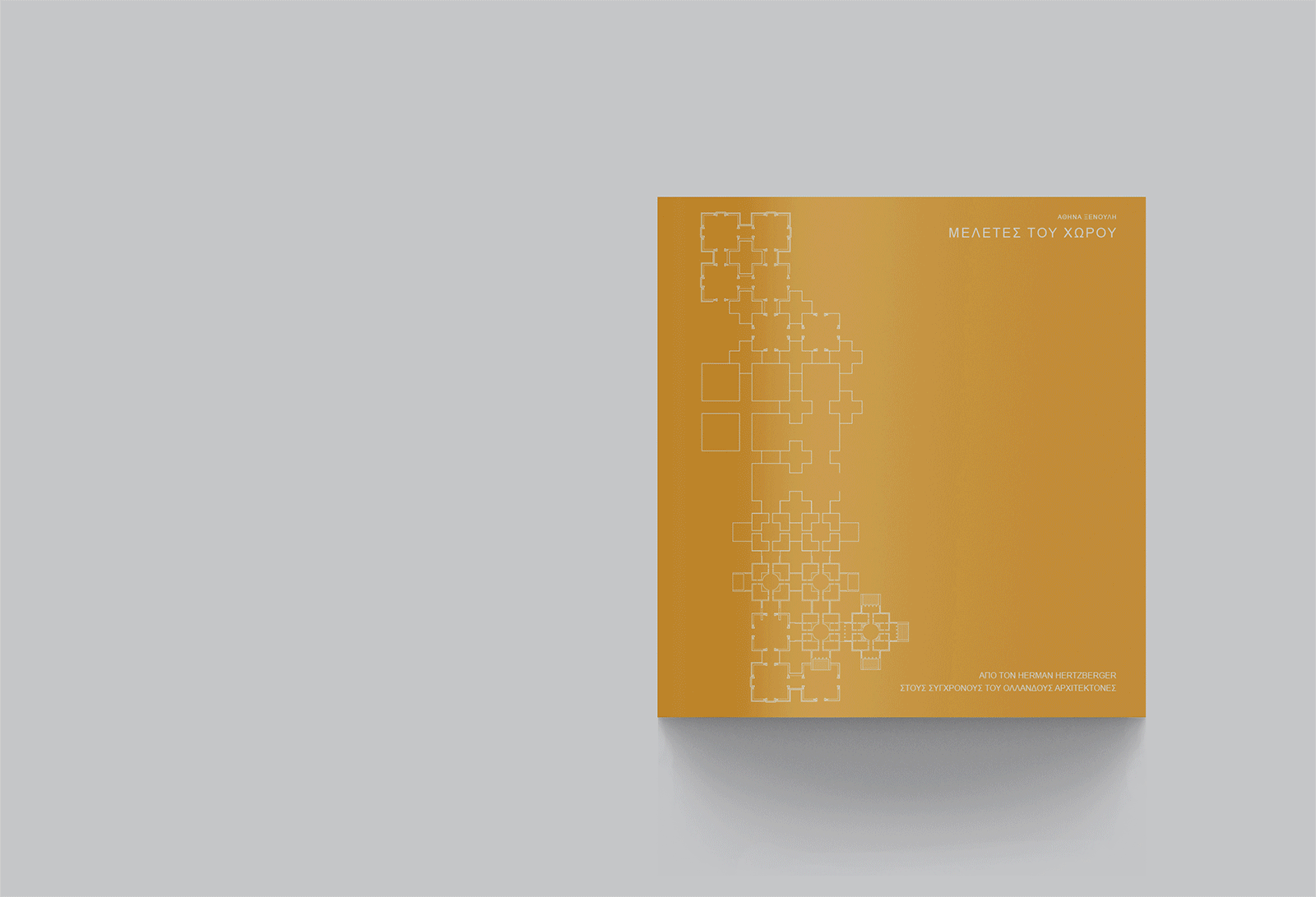In this research thesis entitled “Studies of Space: From Herman Hertzberger to the contemporary Dutch architects”, Athina Xenouli examines the function and dynamics of the dialogue that develops both with other fields of sciences and arts and within the field of architecture, with examples from history, regarding the renewal and revision of the construction of the space.
-text by the creator
The present study is part of the investigation of the construction of space as a product of a systematic theory.
This thesis focuses on the case of Herman Hertzberger and his contemporaneous post-war Dutch architects’ theory. Their quests are inscribed in the context of the confrontation with the space of absolute functionality. The mechanistic, deterministic, univocal, simplistic and universalist dimension of Functionalism was what they attempted to overturn. The concept of structure, derived from the structuralist approach in linguistics and anthropology, becomes a key component in the construction of this new kind of space according to their theory.
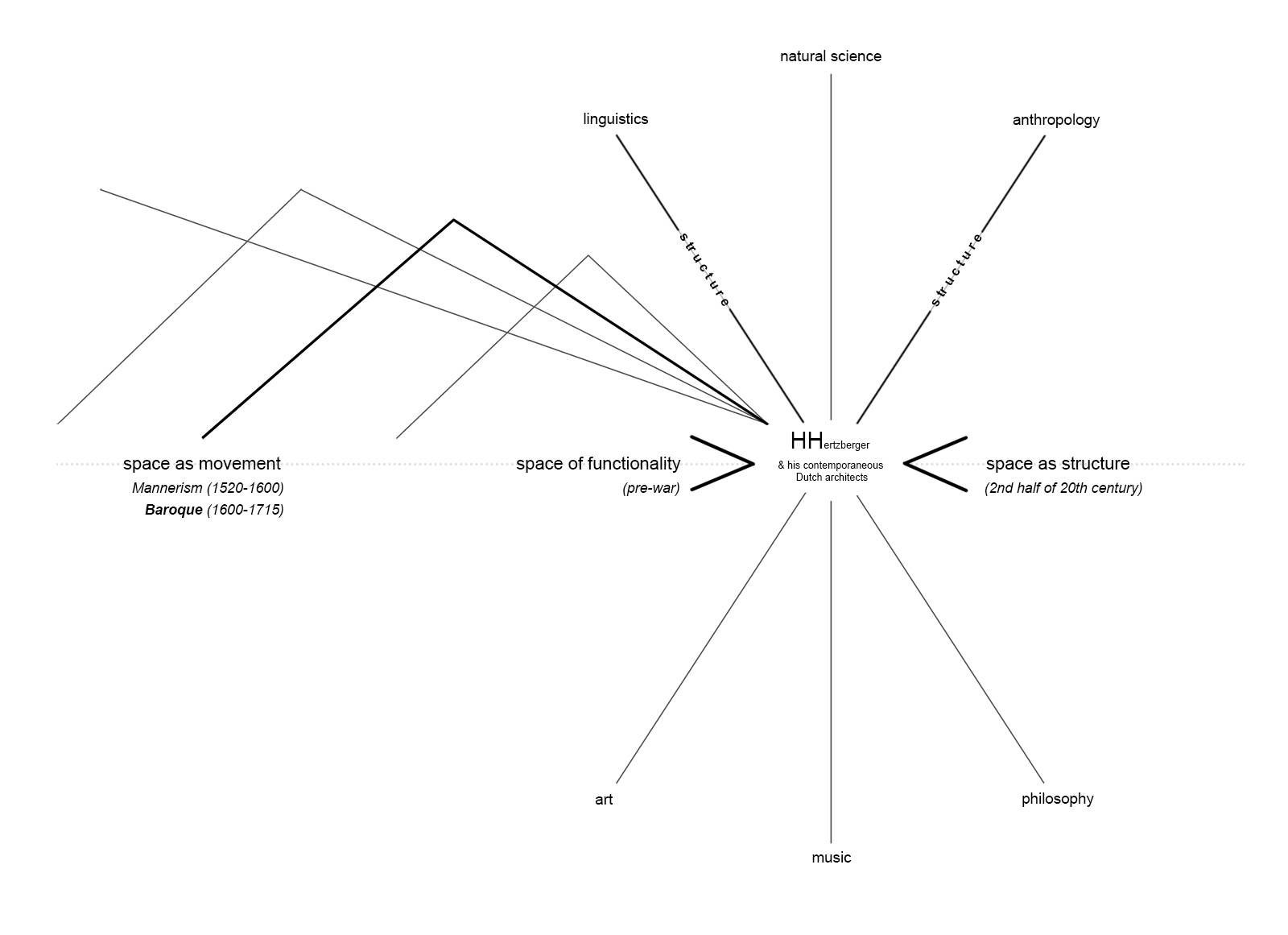
The aim of this study is to assess the function and dynamics of the dialogue that develops on the part of architecture, both with other disciplines, but also within itself when referring to examples from its own history, regarding the renewal and reconsideration of the construction of space.
How and why is a space constituted on the basis of the concept of structure by Herman Hertzberger and the network of architects to which he belongs?
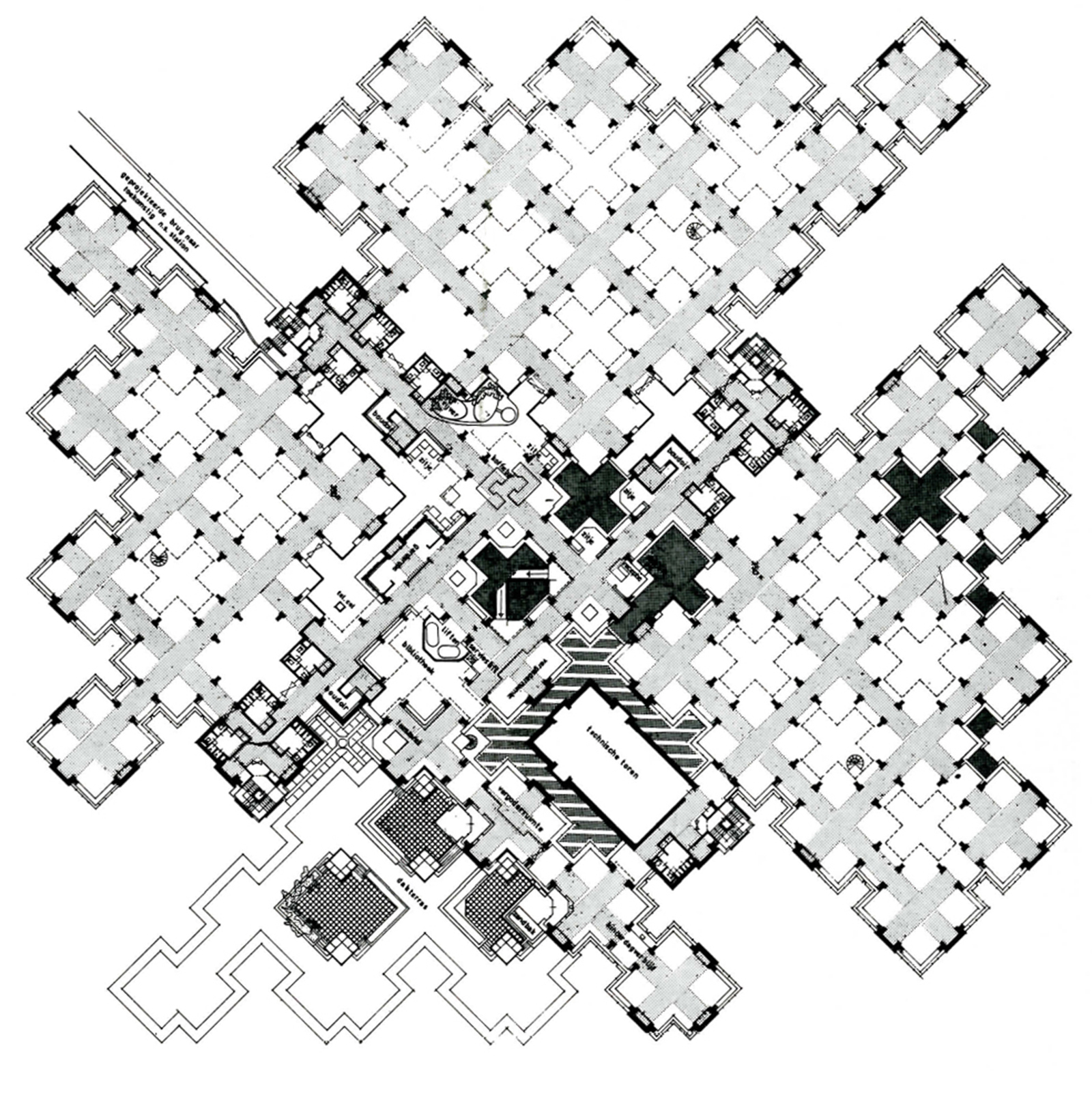
The subject of the first two chapters is the investigation of the construction of a new type of space as the outcome of the introduction of the concept of structure into the otherwise modernist type of space. The way in which space is constituted as a structure by Hertzberger is analyzed in the first chapter. The underlying premise for this analysis is the understanding of his perception of space in general and the determination of his approach to the term “structure”. An architectural space based on the concept of structure, as constructed by Hertzberger, has four characteristics; articulation, equivalence, spatial theme of articulation and building order.
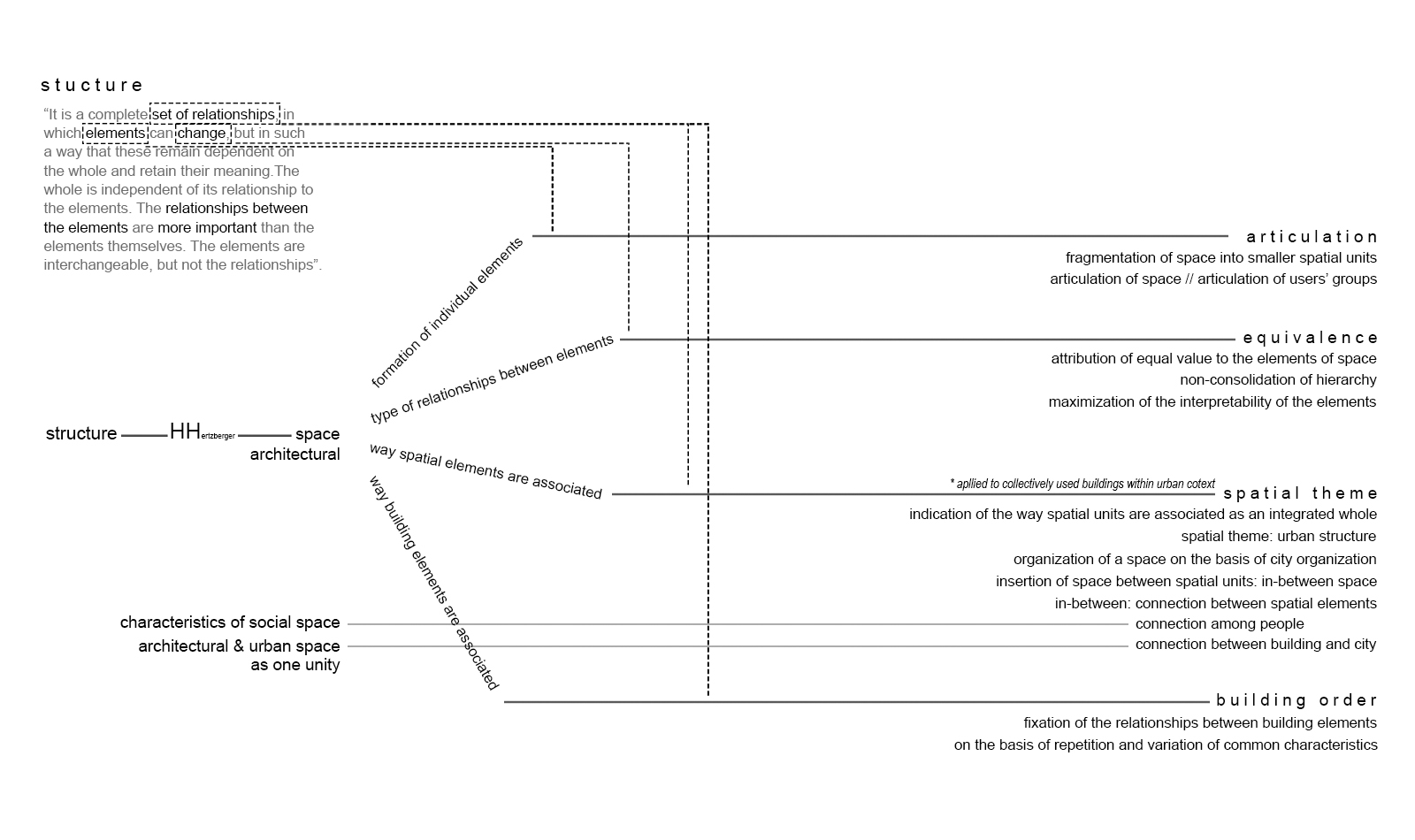
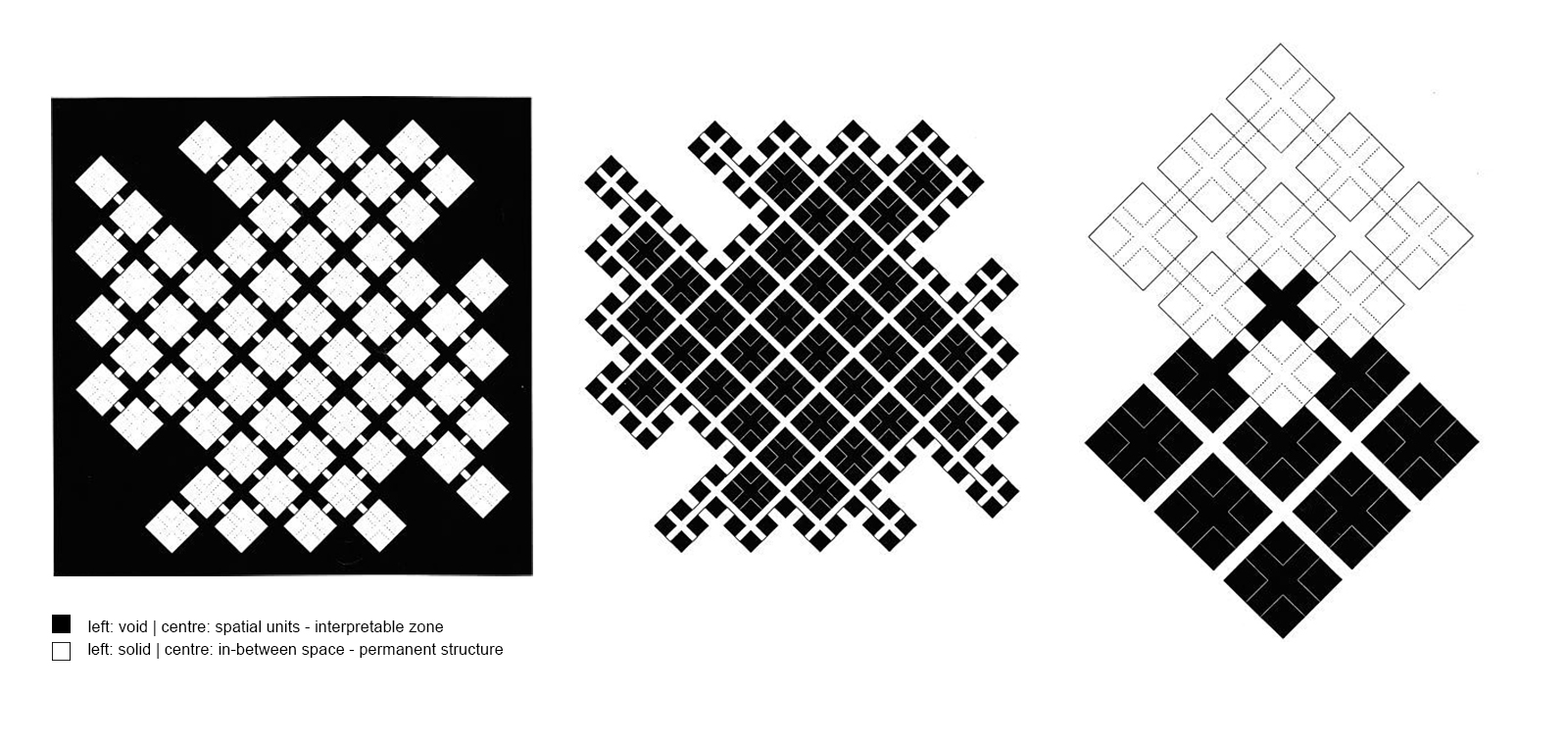
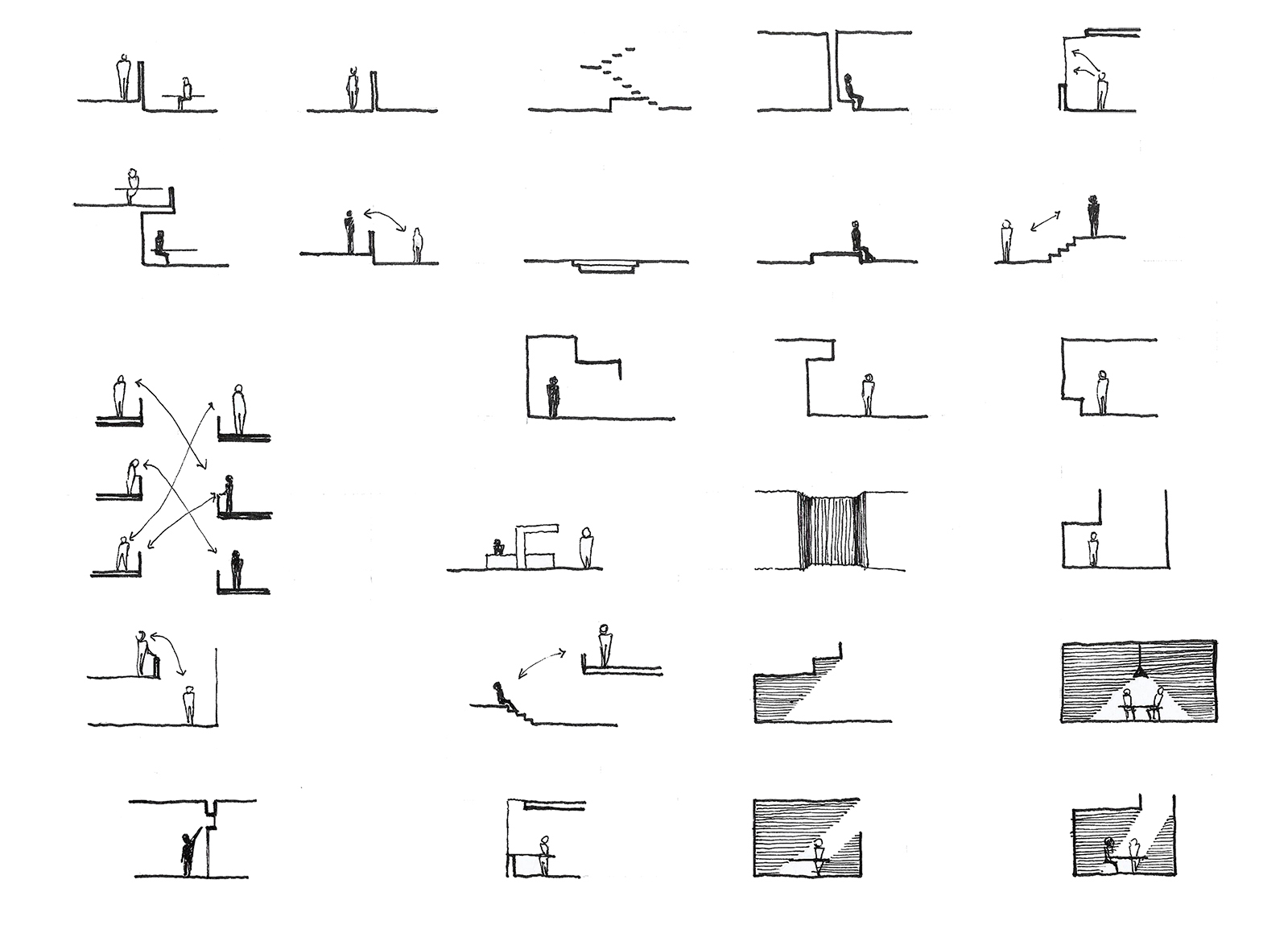
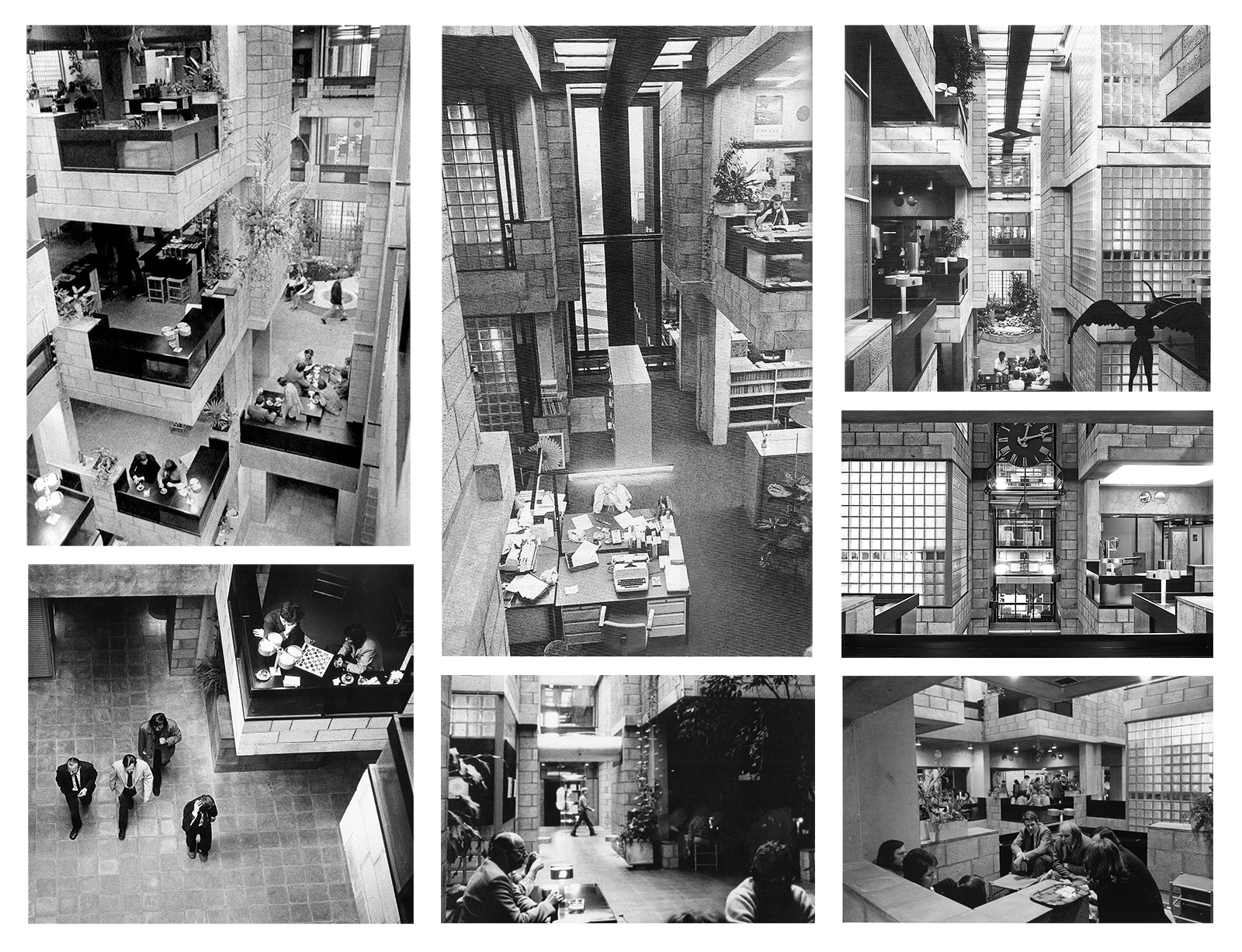
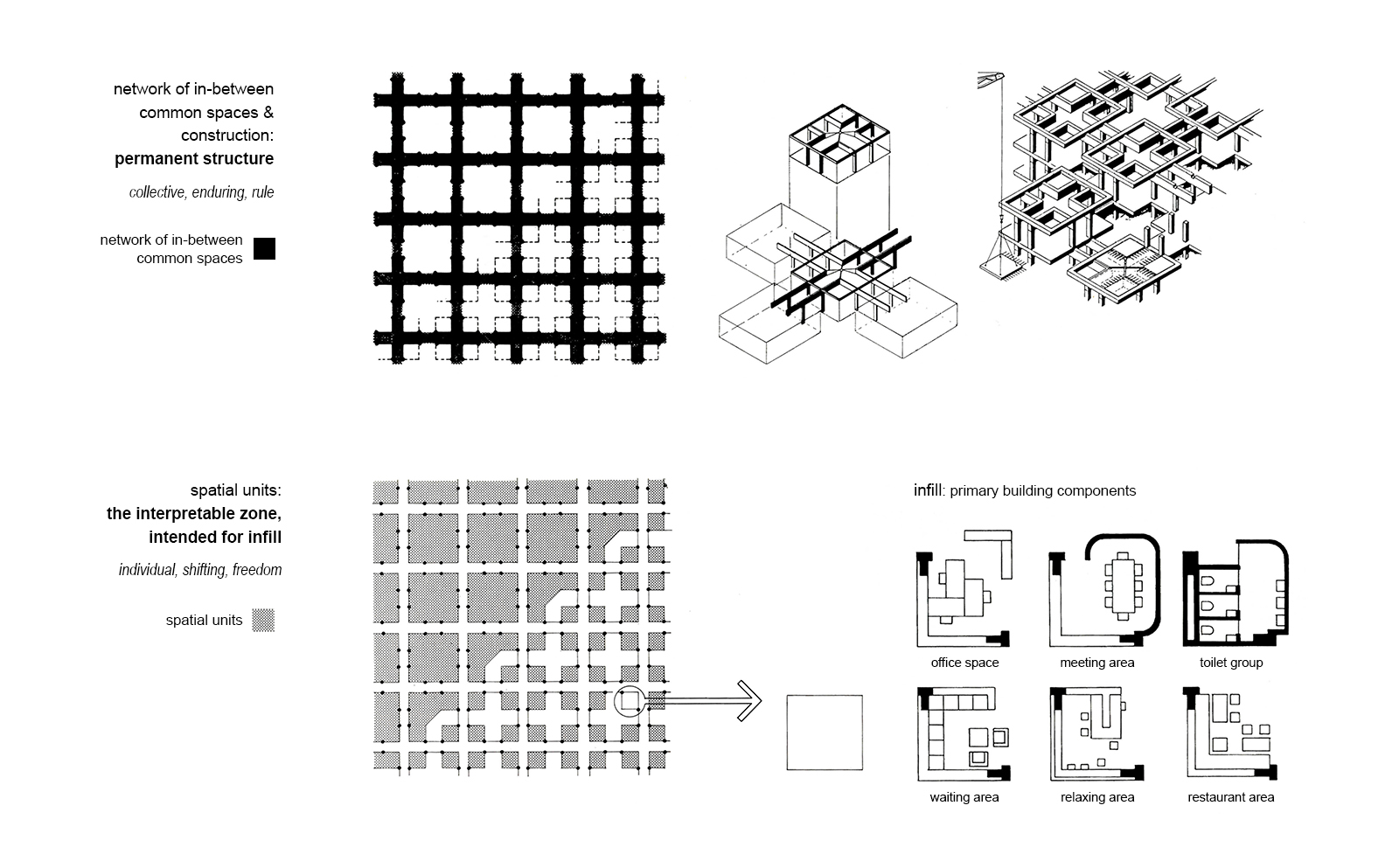
The second chapter further explores the space-structure relationship, beyond Hertzberger’s thought, into the wider architectural network to which he belongs, focusing on the work of Aldo van Eyck, Jaap Bakema and John Habraken. Through the comparative analysis of their theories, different aspects of both the perception of space in general and the space-structure relationship are underscored.
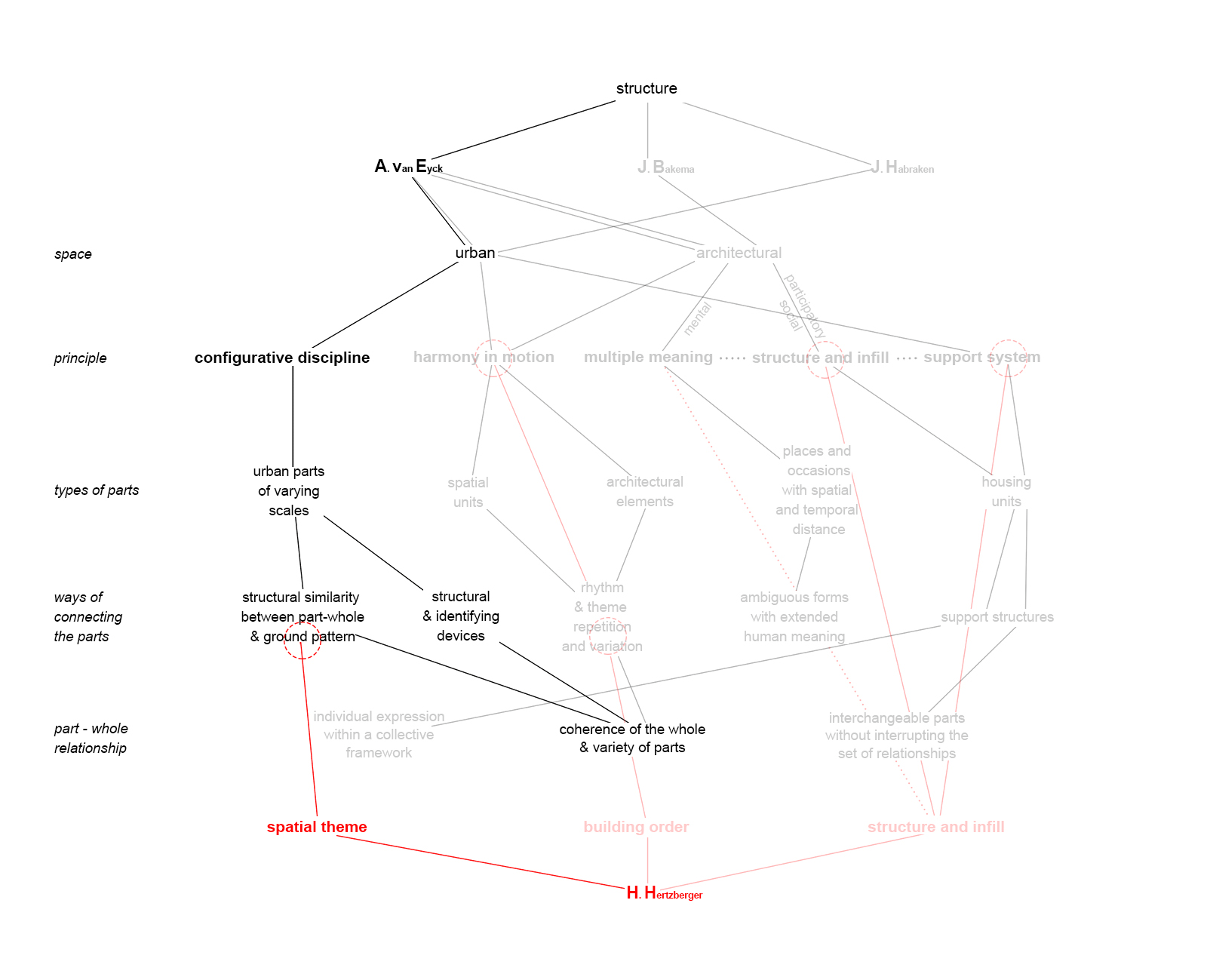
How does the dialogue between space as a structure and space as movement develop? What are the results of this dialogue in terms of the consideration of space as a structure?
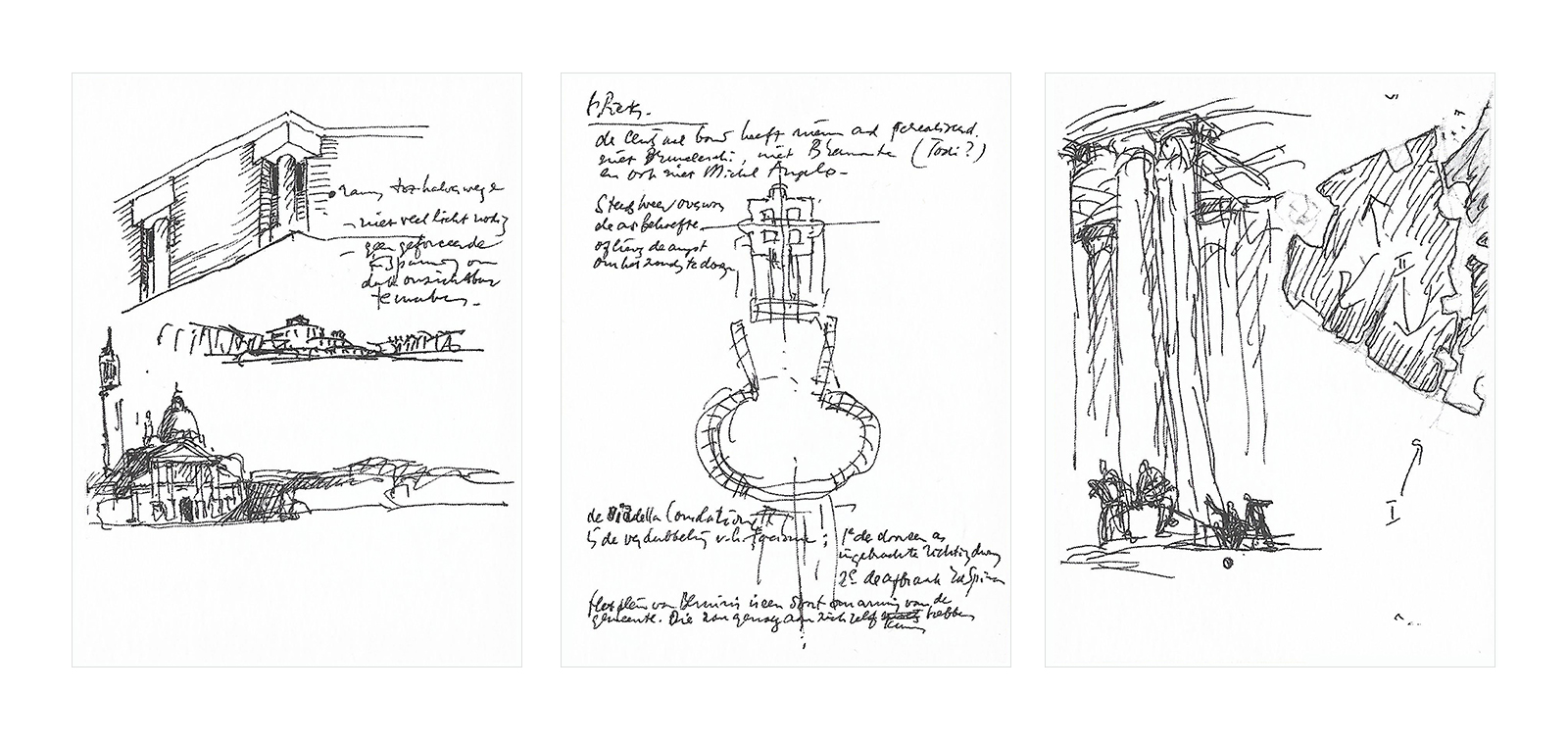
At the same time, the aforementioned architects refer back to the history of architecture and in particular -among others- to works from the Mannerism and Baroque eras, approaching them through their writings and sketches. Specifically, the present study focuses on their interpretations of St. Peter’s Square, San Giorgio Maggiore and Il Redentore basilicas, Villa Rotonda and paintings from the Dutch Golden Age, attempting for correlations with their theory. The concept of movement is a key component in the construction of a space in Baroque architecture and art -a type of space which was in its embryonic stage during Mannerism. Through these Dutch architects’ interpretations, a dialogue opens up between space as structure and space as movement, the evaluation of which is the subject of the last chapter.
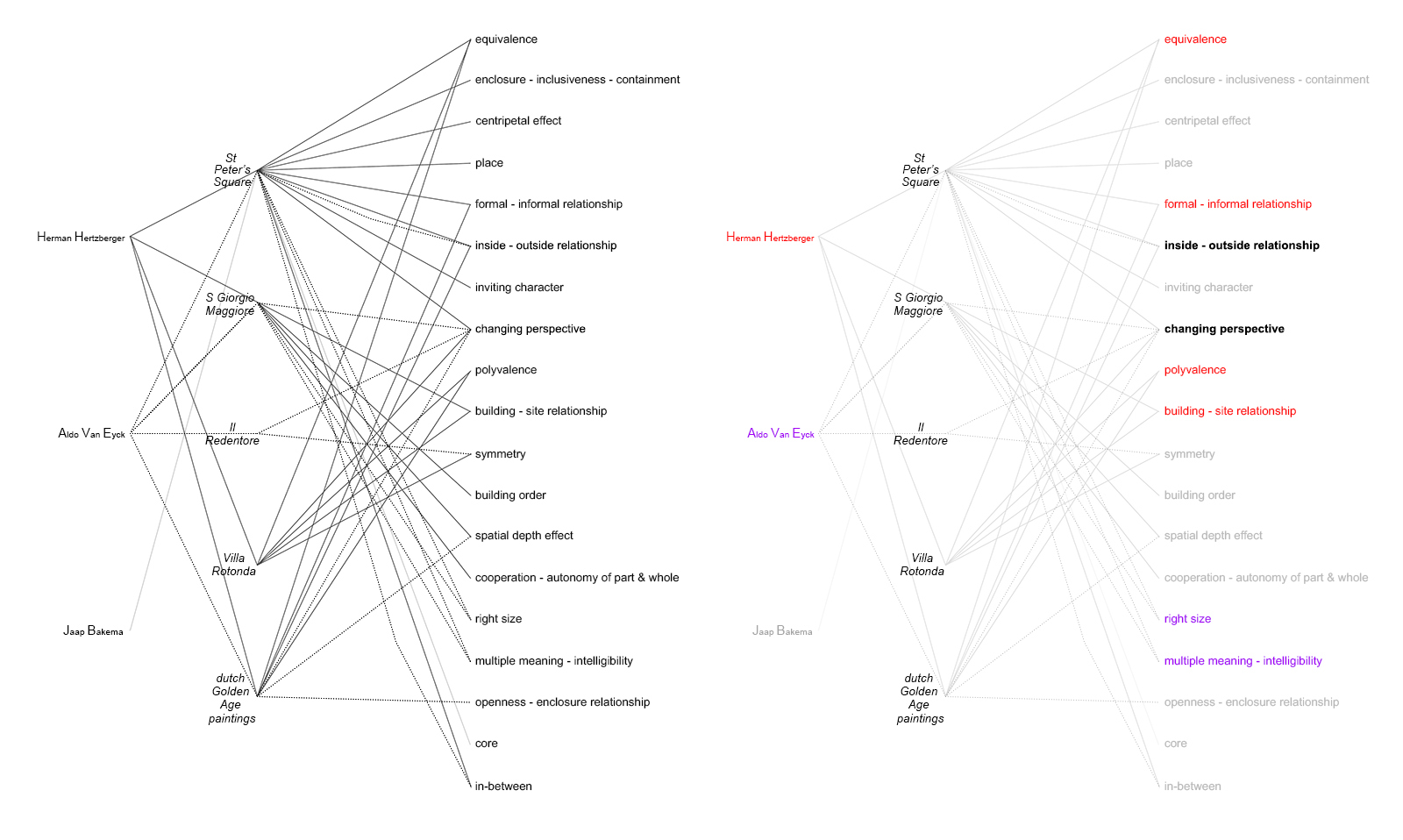
The 17th century space as the impression of movement is approached through the filter of the post-war Dutch architects and thus acquires characteristics of the mid-20th century space as a structure. This study compares the characteristics of the Baroque and Mannerist space, as attributed to it by the architects of spaces as a structure, with its authentic characteristics, as attributed to it by historians of art and architecture.
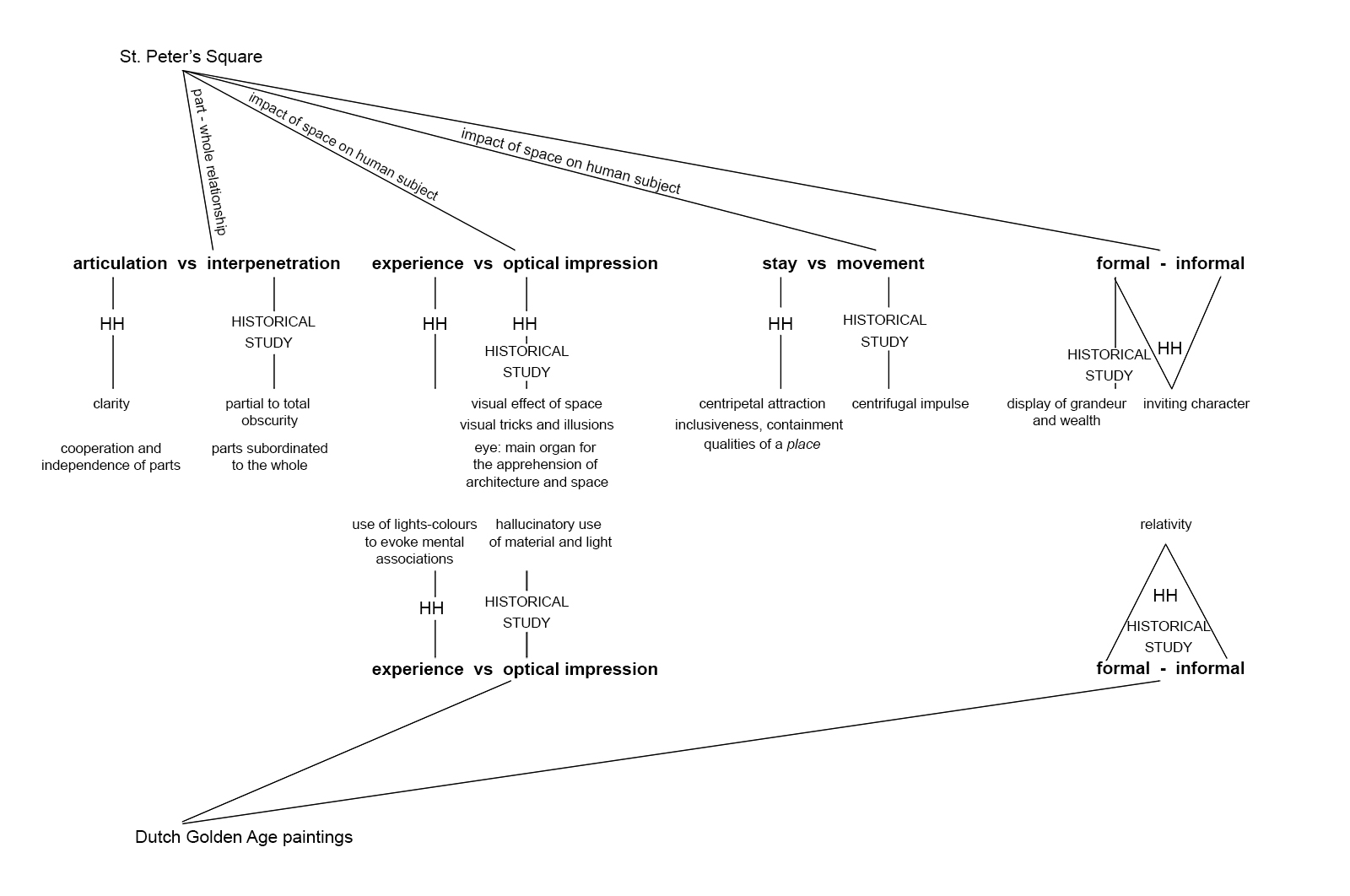
Afterwards, taking their architectural work as a point of reference, it is examined whether and how the dialogue with space as movement has provided them with conceptual tools to construct their own spaces. Finally, the presence and significance of key concepts constituting the 17th century space -such as movement, interpenetration, fragmentation, motif and the unexpected- are sought in the construction of space as a structure.
Facts & Credits
Project title Studies on Space: From Herman Hertzberger to his contemporaneous Dutch architects
Project type Research thesis
Student Athina Xenouli
Exam period March 2022
Course Research thesis
Supervisor Vasiliki Petridou
Department Department of Architecture, University of Patras
Στη ερευνητική της εργασία με τίτλο “Μελέτες του Χώρου: Από τον Herman Hertzberger στους σύγχρονούς του Ολλανδούς αρχιτέκτονες”, η Αθηνά Ξενούλη εξετάζει τη λειτουργία και τη δυναμική του διαλόγου που αναπτύσσεται τόσο με άλλα πεδία επιστημών και τεχνών όσο και εντός του πεδίου της αρχιτεκτονικής, με παραδείγματα από την ιστορία, ως προς την ανανέωση και αναθεώρηση της κατασκευής του χώρου.
-κείμενο από την δημιουργό
Η παρούσα μελέτη εντάσσεται στο πλαίσιο της διερεύνησης του τρόπου που κατασκευάζεται ένας χώρος μέσα από μια συστηματική θεωρία.
Ειδικότερα, παίρνει ως παράδειγμα τη θεωρία του Herman Hertzberger και του αρχιτεκτονικού δικτύου στο οποίο ανήκει. Οι αναζητήσεις των συγκεκριμένων μεταπολεμικών Ολλανδών αρχιτεκτόνων εντάσσονται στα πλαίσια του αντίλογου προς τον χώρο της απόλυτης λειτουργικότητας.
Η μηχανιστική, ντετερμινιστική, μονοσήμαντη, απλουστευτική και καθολική προσέγγιση του Φονξιοναλισμού ήταν αυτή που επεδίωξαν να ανατρέψουν. Η έννοια της δομής, προερχόμενη από τη στρουκτουραλιστική θεώρηση στη γλωσσολογία και ανθρωπολογία, γίνεται βασική συνιστώσα στην κατασκευή αυτού του νέου χώρου σύμφωνα με τη θεωρία τους.
Στόχος της εργασίας είναι να εξετάσει τη λειτουργία και τη δυναμική του διαλόγου που αναπτύσσεται τόσο με άλλα πεδία επιστημών και τεχνών όσο και εντός του πεδίου της αρχιτεκτονικής, με παραδείγματα από την ιστορία, ως προς την ανανέωση και αναθεώρηση της κατασκευής του χώρου.
Πώς και γιατί συγκροτείται ο χώρος με βάση την έννοια της δομής στον Herman Hertzberger και στο δίκτυο αρχιτεκτόνων που ανήκει;
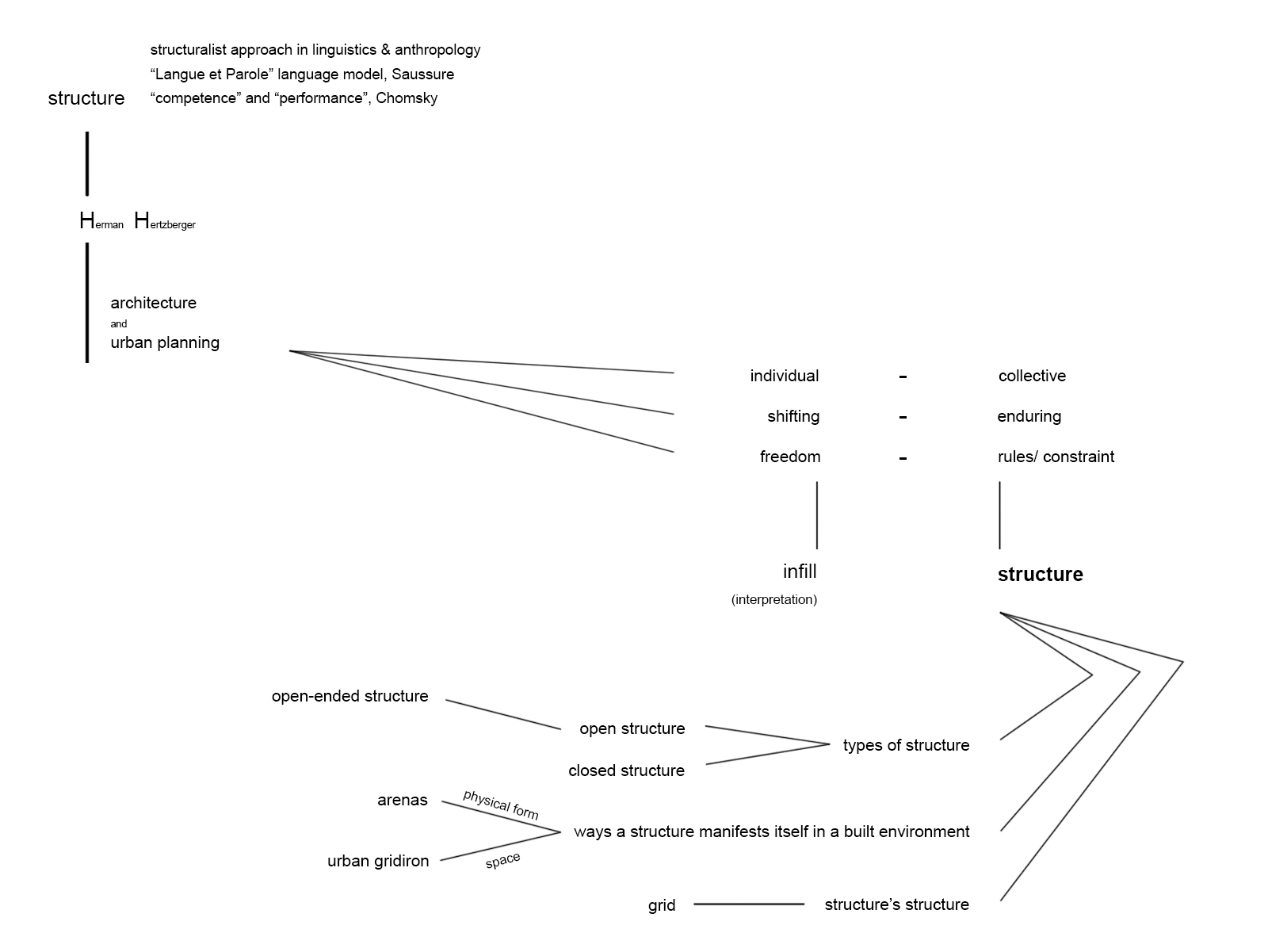
Η διερεύνηση της κατασκευής ενός νέου τύπου χώρου, ως προϊόν εισαγωγής της έννοιας της δομής στον κατά τα άλλα μοντερνιστικό τύπο χώρου, αποτελεί αντικείμενο των δύο πρώτων ενοτήτων. Στην πρώτη ενότητα αναλύεται ο τρόπος που συγκροτείται ο χώρος ως δομή από τον Hertzberger. Βασική προϋπόθεση για να γίνει αυτό είναι η εξέταση αφενός της γενικότερης αντίληψής του για τον χώρο, αφετέρου της έννοιας της δομής όπως εμφανίζεται στην σκέψη του.
Τα βασικά χαρακτηριστικά ενός αρχιτεκτονικού χώρου στη βάση της έννοιας της δομής κατά τον Hertzberger συνοψίζονται στη διάρθρωση, την ισοτιμία, το χωρικό θέμα της διάρθρωσης και τον κατασκευαστικό ρυθμό.
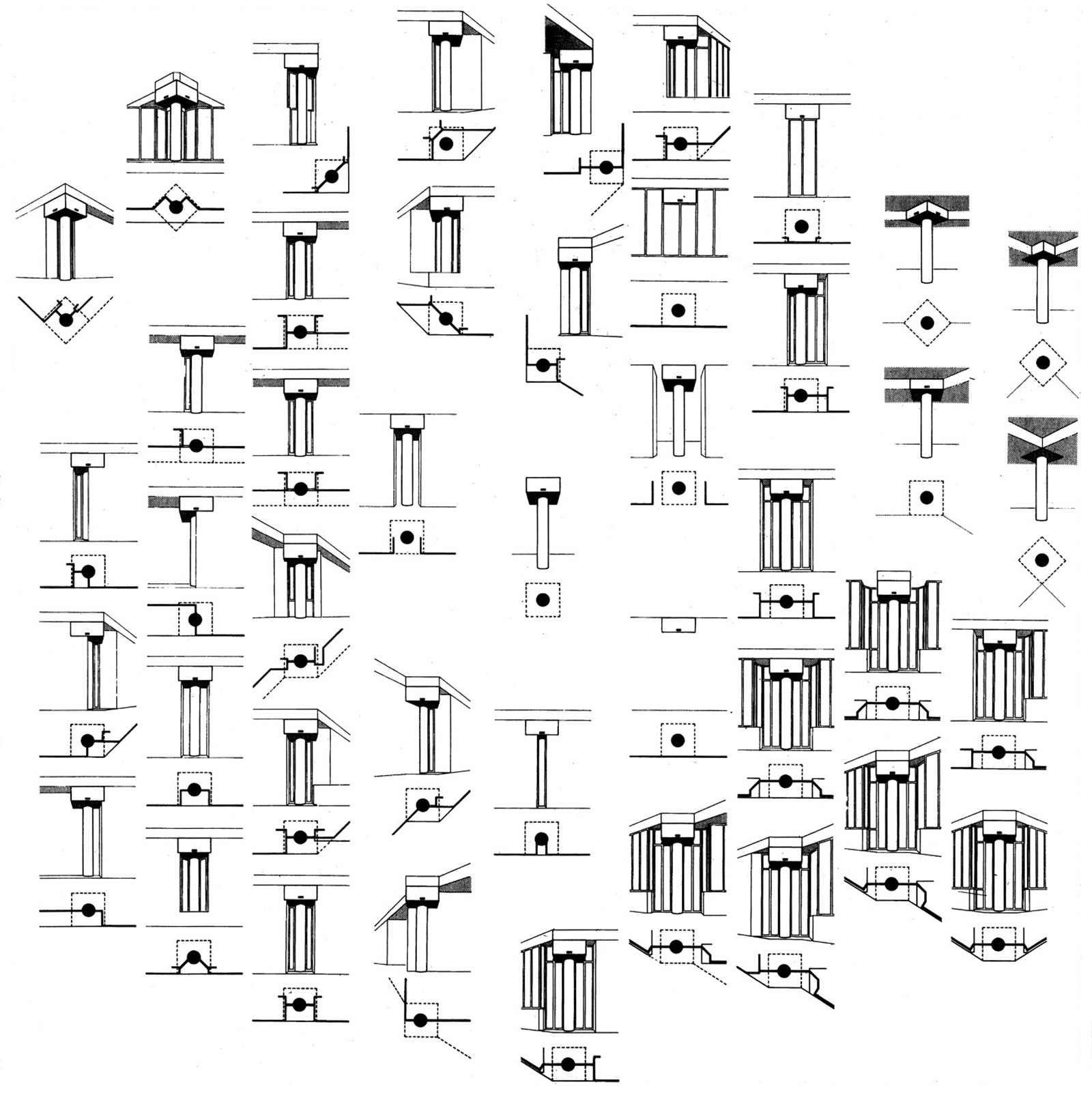
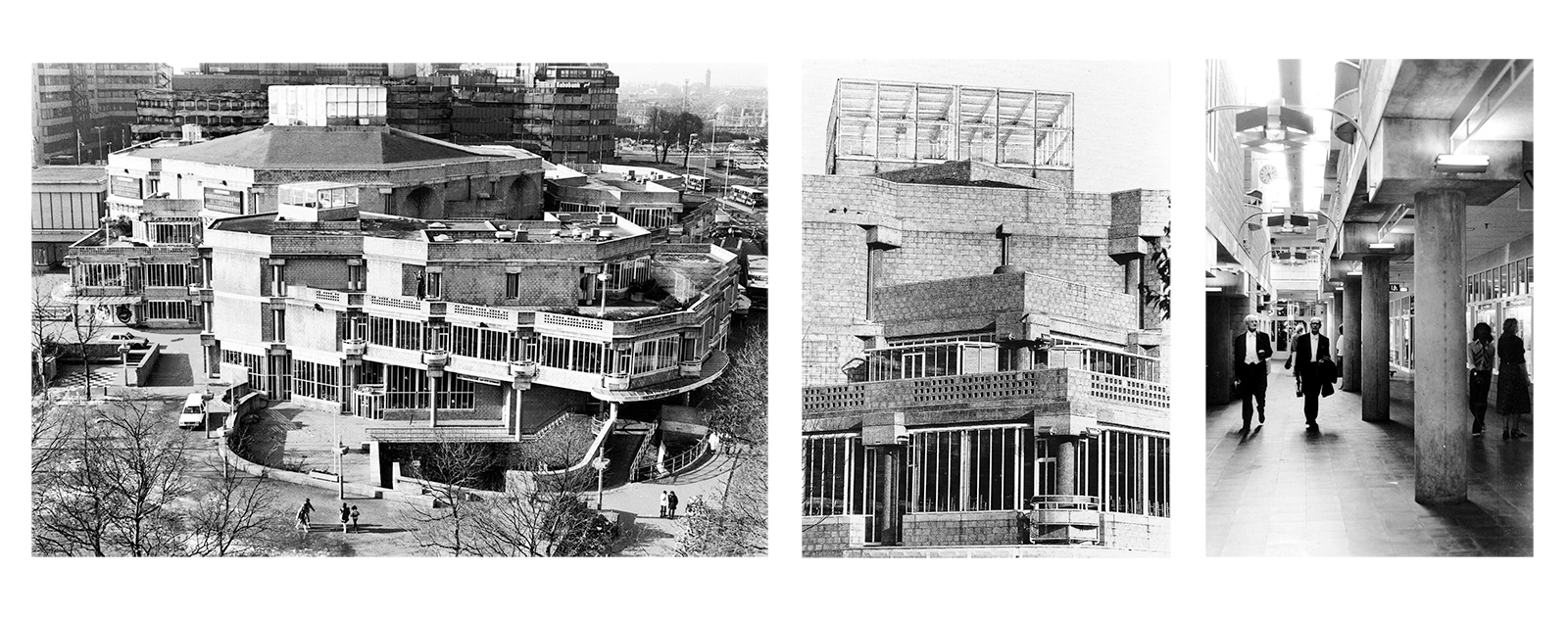
Το δεύτερο κεφάλαιο αφορά στην τοποθέτηση της σκέψης του Hertzberger σε ένα ευρύτερο πλαίσιο αναφοράς. Εξέχουσες φιγούρες του δικτύου του, που μελετώνται στα πλαίσια της εργασίας, είναι οι Aldo van Eyck, Jaap Bakema και John Habraken. Μέσα από τη συγκριτική μελέτη της θεωρίας τους, αναδεικνύονται διαφορετικές πτυχές της γενικότερης θεώρησης για τον χώρο και της σχέσης χώρου και δομής.
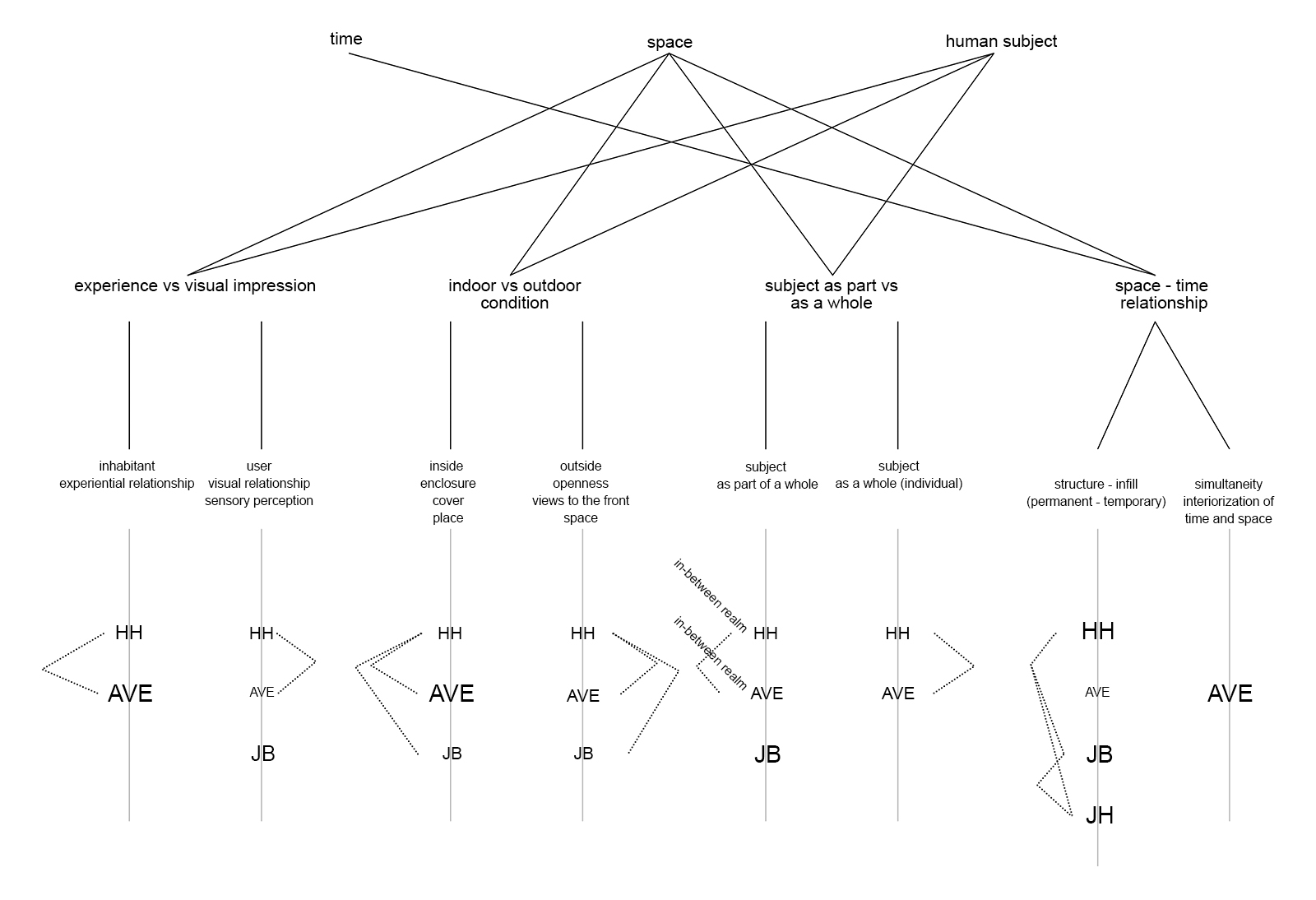
Πώς αναπτύσσεται ο διάλογος ανάμεσα στον χώρο ως δομή και στον χώρο ως κίνηση; Ποια τα αποτελέσματα του διαλόγου αυτού στη διερεύνηση της θεώρησης του χώρου ως δομή;
Παράλληλα, οι αρχιτέκτονες της δομής ανατρέχουν στην ιστορία της αρχιτεκτονικής και ειδικότερα, μεταξύ άλλων, σε έργα των περιόδων του Μανιερισμού και του Μπαρόκ, ερμηνεύοντάς τα μέσα από γραπτά και σκίτσα. Συγκεκριμένα, η εργασία εστιάζει στη ματιά τους στην πλατεία του Αγίου Πέτρου, στις βασιλικές των San Giorgio Maggiore και Il Redentore, στη Villa Rotonda και σε πίνακες ζωγραφικής της ολλανδικής Χρυσής Εποχής, αναζητώντας συσχετισμούς με τη θεωρία τους. Βασική συνιστώσα για την κατασκευή του χώρου της αρχιτεκτονικής και τέχνης του Μπαρόκ -ο οποίος βρισκόταν σε εμβρυακό στάδιο κατά τον Μανιερισμό- είναι η έννοια της κίνησης. Μέσα από τις αναγνώσεις των Ολλανδών αρχιτεκτόνων αναπτύσσεται διάλογος μεταξύ του χώρου ως δομή και του χώρου ως κίνηση, η αξιολόγηση του οποίου αποτελεί το αντικείμενο της τελευταίας ενότητας.
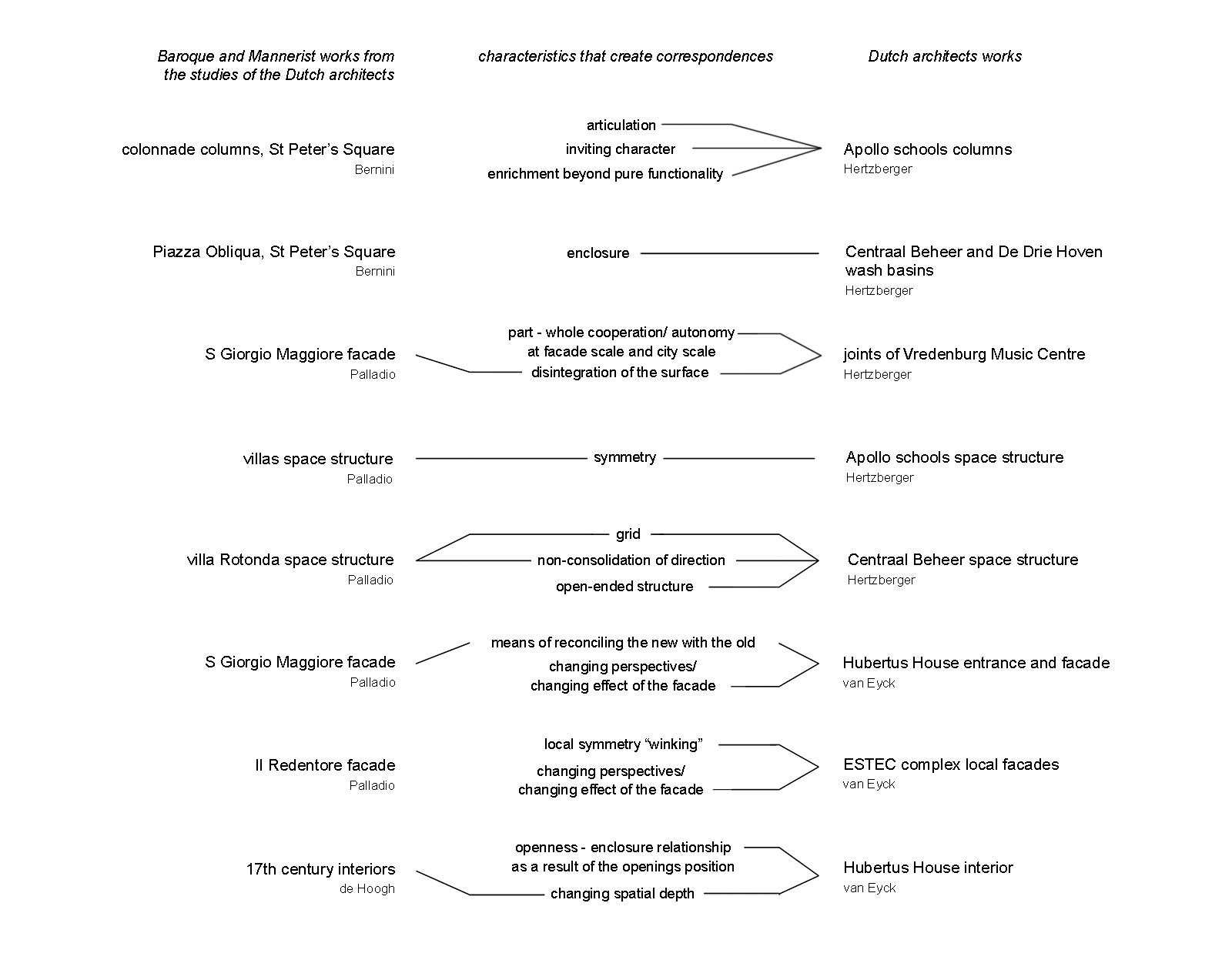
Ο χώρος ως κίνηση του 17ου αιώνα ερμηνεύεται μέσα από το φίλτρο των Ολλανδών αρχιτεκτόνων, οι οποίοι του προσδίδουν χαρακτηριστικά του χώρου ως δομή των μέσων του 20ου αιώνα. Αναζητούνται επομένως εκείνα τα χαρακτηριστικά που αποδίδονται στον χώρο ως κίνηση από τους αρχιτέκτονες της δομής, μέσα από τις αναφορές τους, συγκριτικά με τις ποιότητες του χώρου ως κίνηση, όπως του αποδίδονται από ιστορικούς τέχνης και αρχιτεκτονικής.
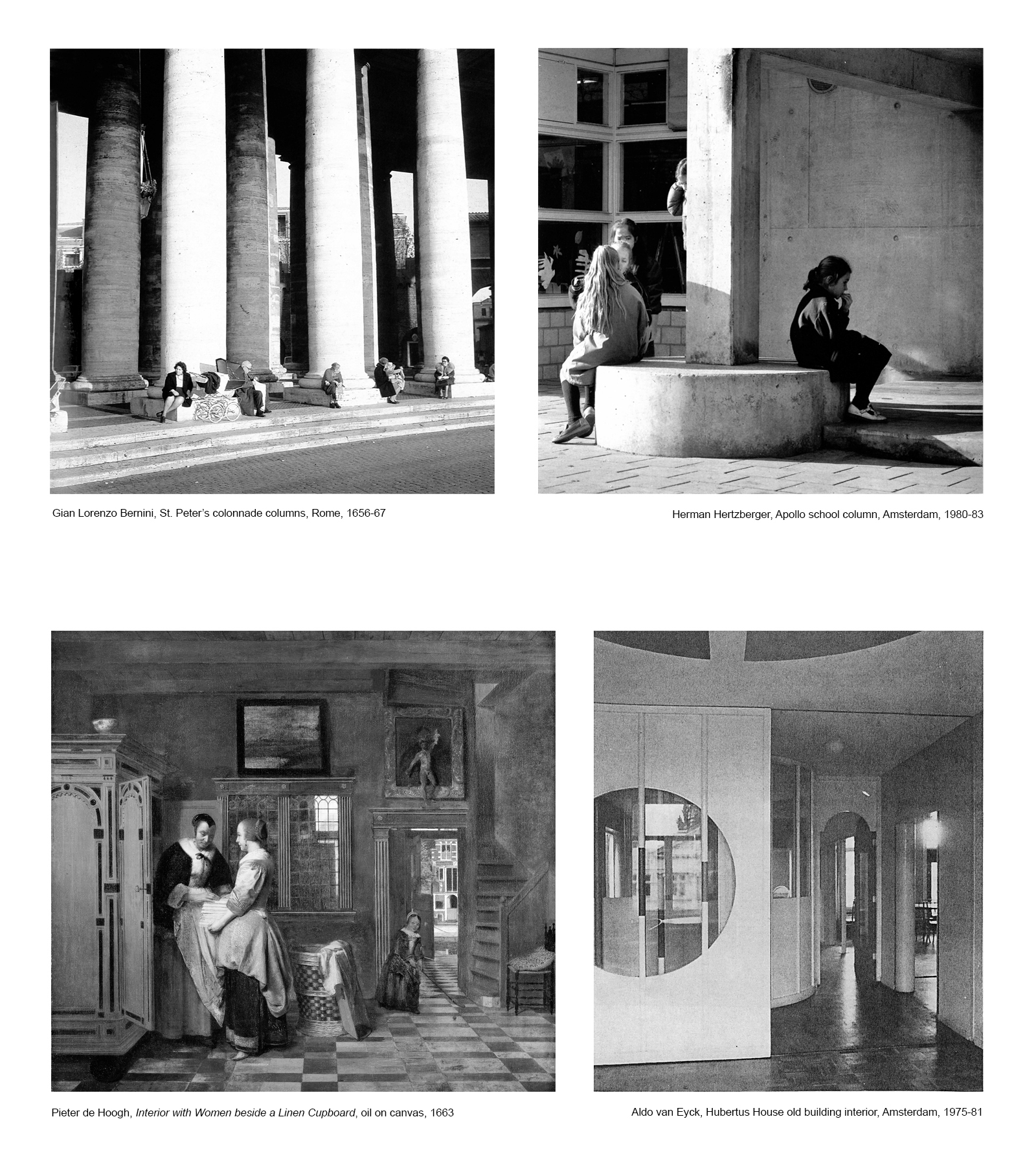
Κατόπιν, μέσα από το αρχιτεκτονικό έργο των αρχιτεκτόνων της δομής εξετάζεται το αν και το πώς η ματιά στον χώρο ως κίνηση τούς έχει τροφοδοτήσει με στοιχεία ώστε να κατασκευάσουν τους δικούς τους χώρους. Τέλος, αναζητείται στον χώρο της δομής η παρουσία και σημασία των βασικών εννοιών που συγκροτούν τον χώρο ως κίνηση, όπως η αλληλοδιείσδυση, η διάσπαση, το μοτίβο και το απροσδόκητο.
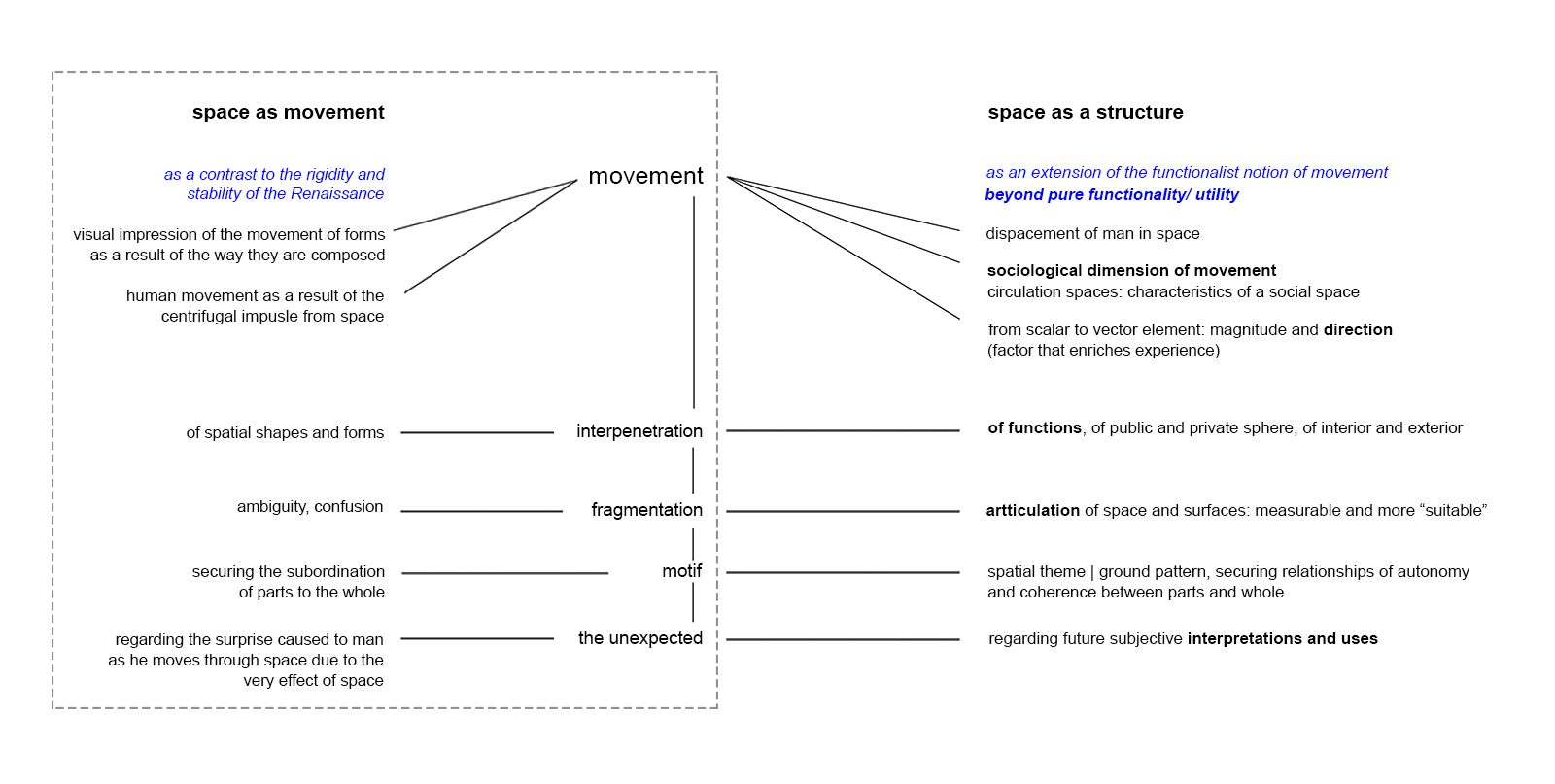
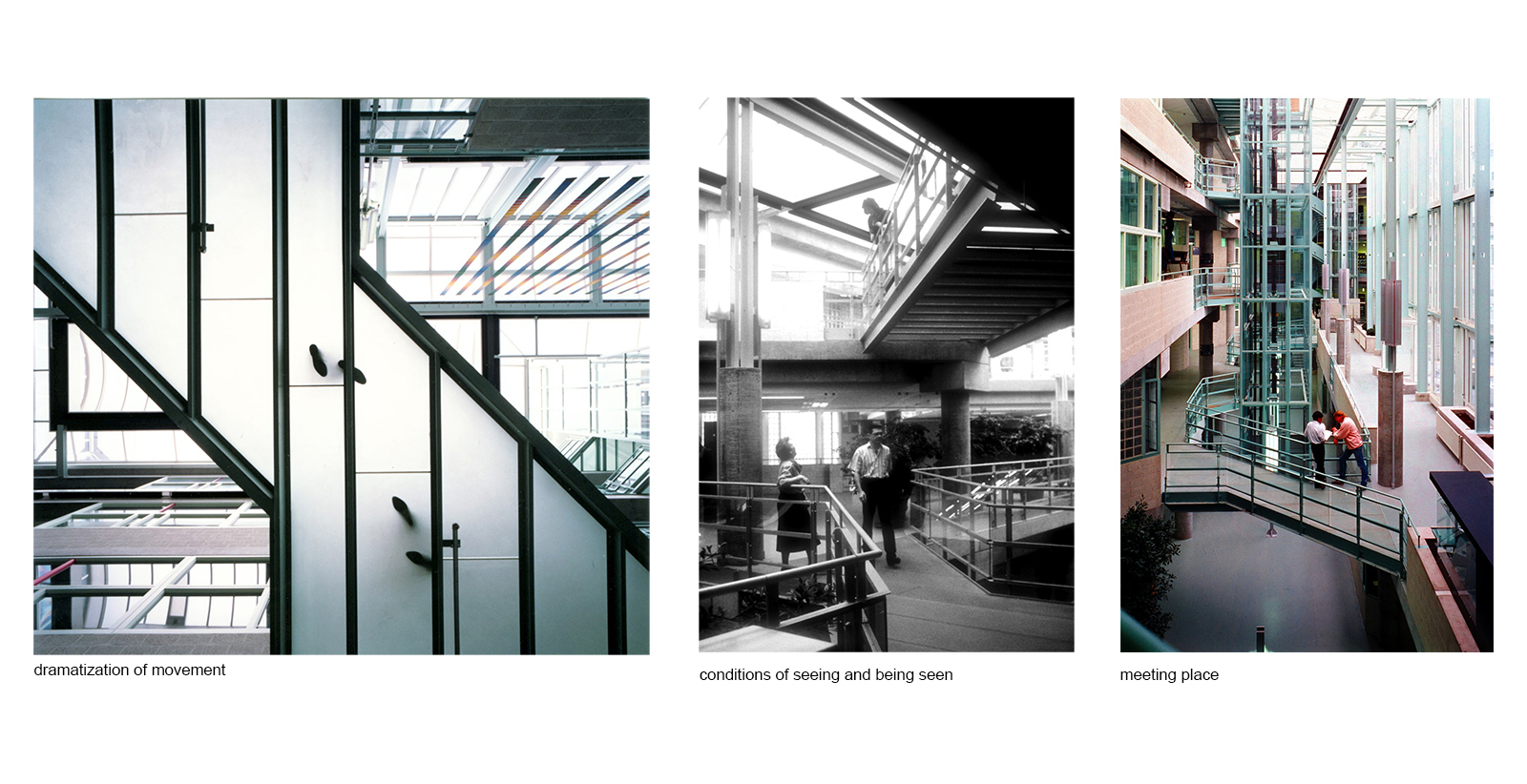
Στοιχεία Έργου
Τίτλος εργασίας Μελέτες του Χώρου: Από τον Herman Hertzberger στους σύγχρονούς του Ολλανδούς αρχιτέκτονες
Τύπος Έργου Ερευνητική εργασία
Φοιτήτρια Αθηνά Ξενούλη
Εξεταστική περίοδος Μάρτιος 2022
Μάθημα Ερευνητική εργασία
Επιβλέπουσα καθηγήτρια Βασιλική Πετρίδου
Σχολή Τμήμα Αρχιτεκτόνων Μηχανικών, Πανεπιστήμιο Πατρών
READ ALSO: Memories Apartment in Kolonaki, Athens: an architecture of bricolage by Amalgama Architects
